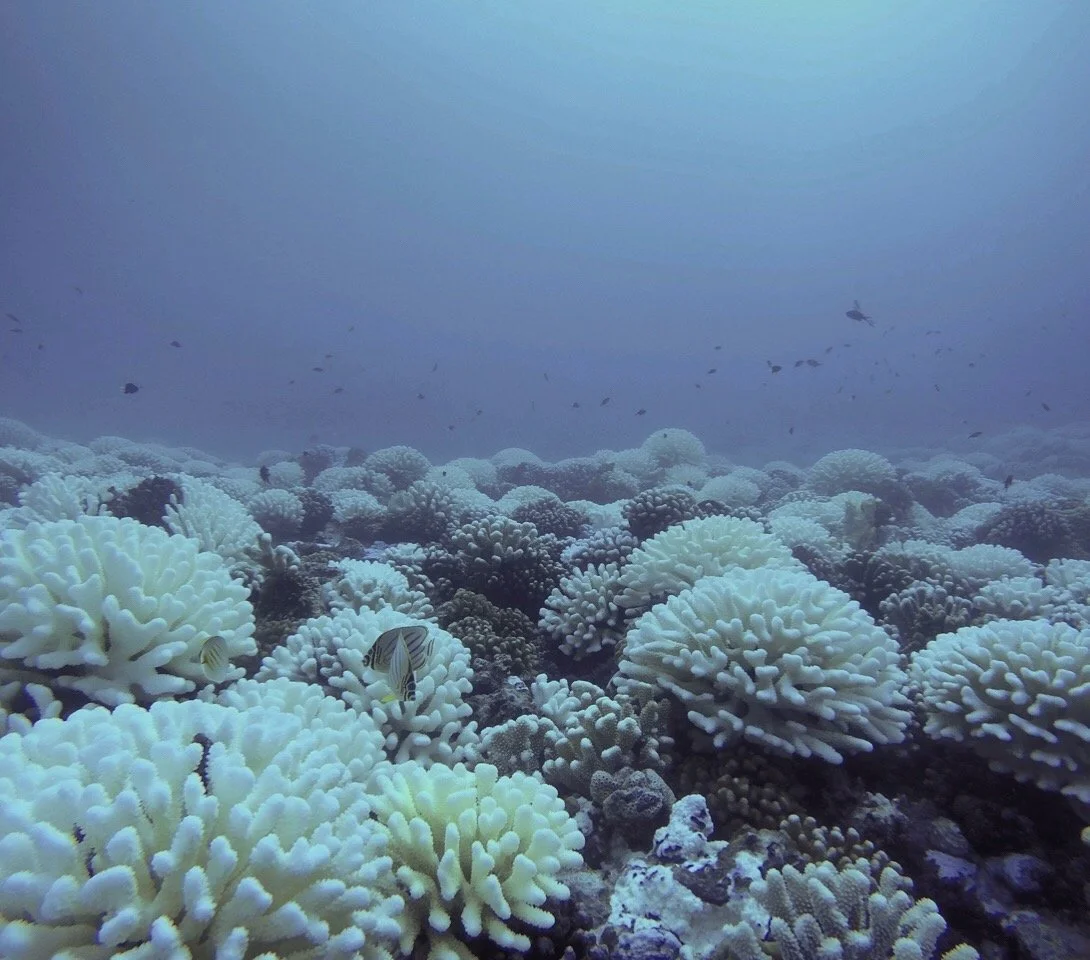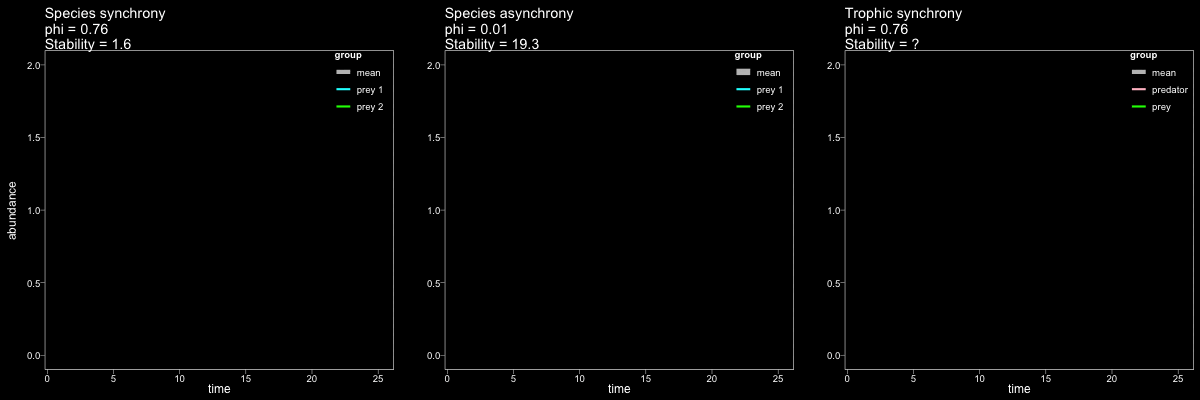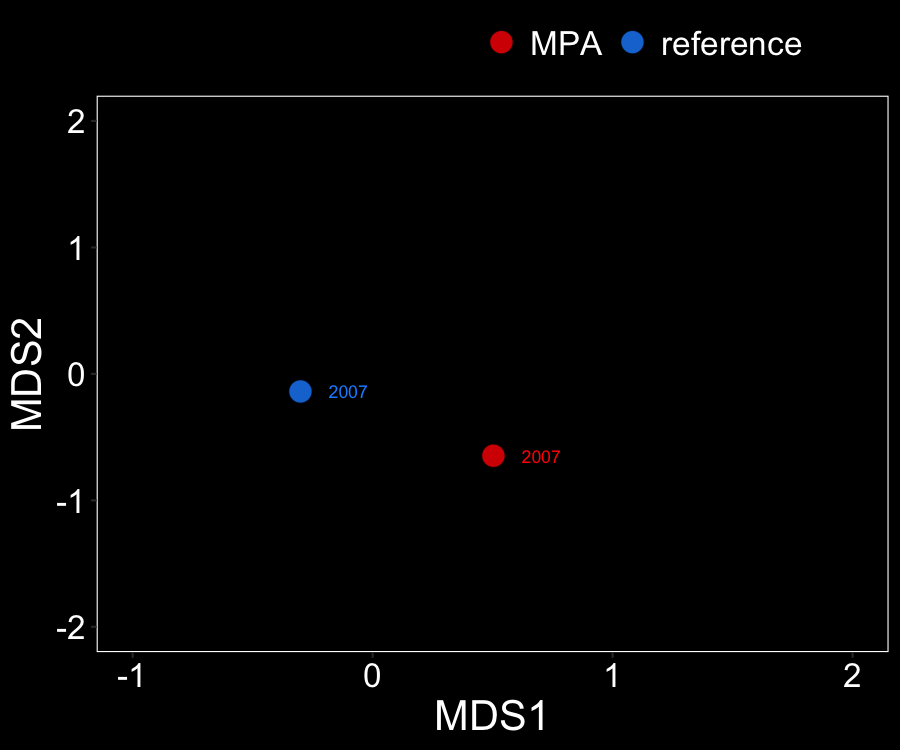Asynchrony and stability in marine systems
What leads to ecosystem stability and resilience?
This question is a key focus of contemporary ecology. Asynchrony, when temporal fluctuations among species or populations lack coherence, can be a key indicator of ecological stability. My PhD work focused on the drivers of asynchrony in natural ecological systems. While the “portfolio” or “insurance” effects offered by taxonomically and environmentally diverse systems have been well established in theoretical studies and controlled experiments, applying these concepts to natural systems that are inherently variable has been an important hurdle to understanding their utility for assessing stability and resilience.
Equilibrium in marine ecosystems
Ecosystems are structured by a myriad of biological and physical processes occurring across taxonomic, spatial and temporal scales. While contemporary ecology has advanced our understanding of how species-environment interactions influence population and community change, we still lack fundamental knowledge on (1) how food-web dynamics contribute to stability, and (2) how stabilizing mechanisms scale up to entire ecosystems, where immigration and emigration mediate population dynamics.

Understanding patterns of spatial resilience
What leads to population and community recovery?
Can we operationalize knowledge?
Applying ecological theory in management contexts is vital for resource managers facing uncertainty about marine ecosystem trajectories and to maximize the efficacy of current tools for addressing contemporary stressors. A central challenge is identifying where and when resilient populations can be maintained, and how they can repopulate areas where they have been lost. My research addresses this challenge by examining the connectivity of key foundation species: corals in tropical reefs and macroalgae in temperate systems


